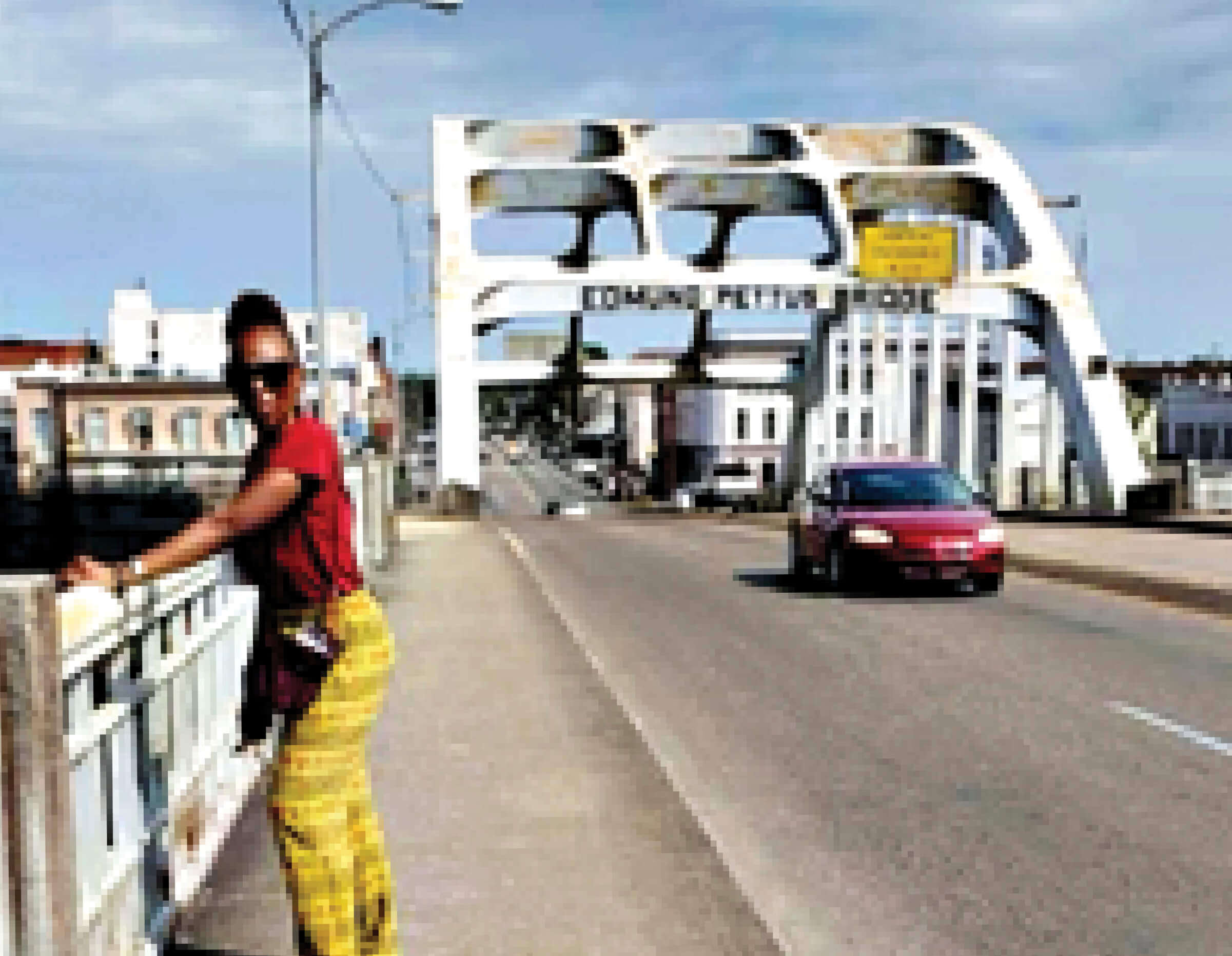BONUS CONTENT/EXPANDED FEATURE STORY

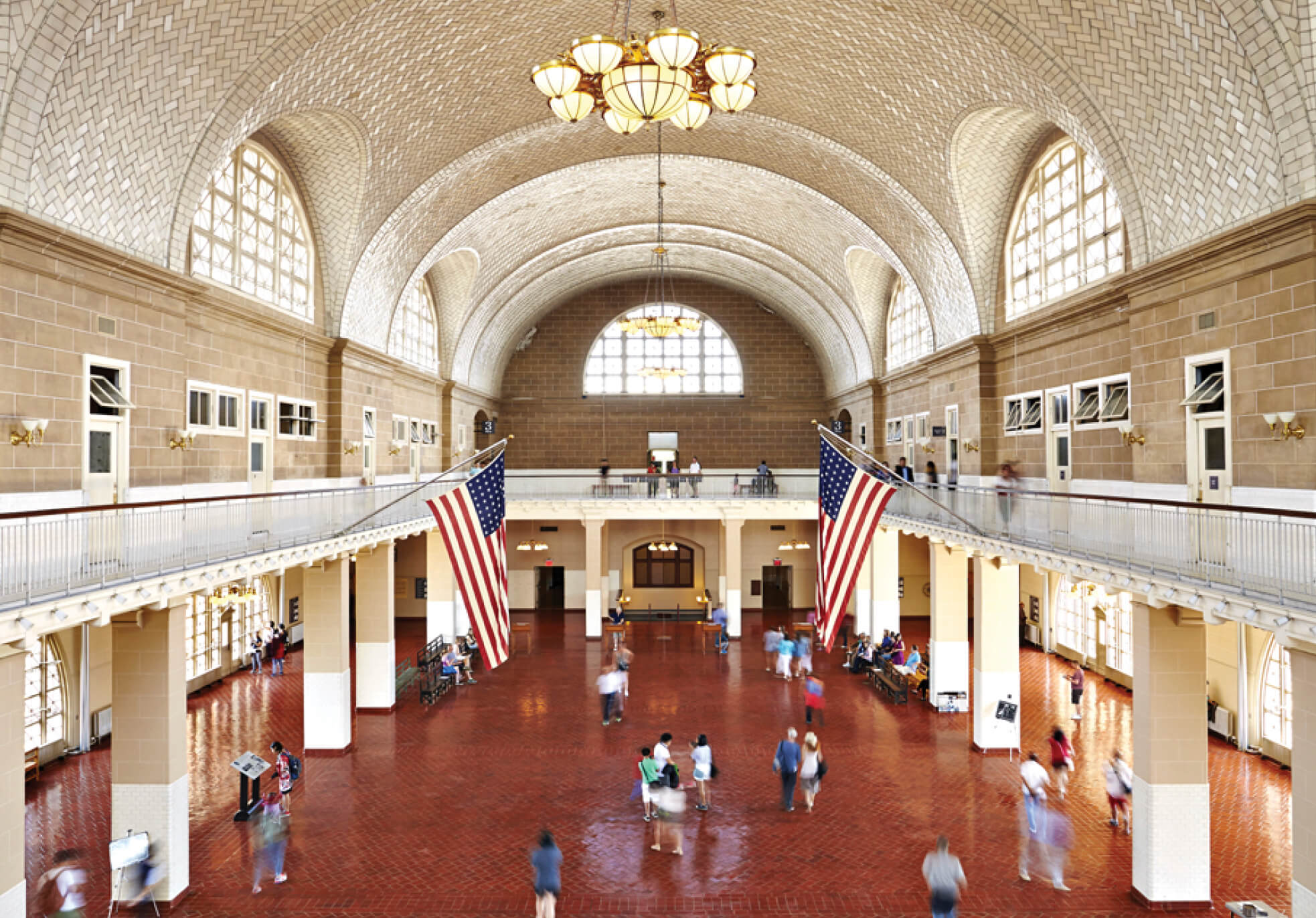
Ellis Island’s Great Hall
ELLIS ISLAND
New York Harbor
“Her journey was made real for me.”
SO MANY families, so much history, so many names on that curving wall with the Statue of Liberty in the background. About 40 percent of Americans can trace an ancestor’s arrival and journey through Ellis Island, the transit point for millions of immigrants seeking to escape war, poverty or persecution in Europe. Here, they were granted their American dream.
They were people like Joyce Marcel’s grandmother Lena Kagan, who arrived at Ellis Island in 1908, at age 16. To escape Jewish persecution in Ukraine, Lena traveled by foot across mountains to board a ship bound for America. Marcel, 82, of Dummerston, Vermont, made a pilgrimage in 2017.
“Her journey was made real for me,” she says. “I remember my grandmother telling me how she practiced reciting her false names and birth dates in case they were stopped by the Cossacks. I’ve been kicking myself now that she’s gone that I didn’t ask more questions.”

Lena Kagan, right
From 1892 to 1924, more than 12 million immigrants were processed at Ellis Island. Today, this site in New York Harbor, operated by the National Park Service, includes a museum that draws millions of visitors per year.
The centerpiece of the grounds is the American Immigrant Wall of Honor, where nearly 1 million names are etched into stainless steel; pilgrims come to see their family name. Visitors can also research their ancestry on the American Family Immigration History Center database, which contains some 65 million records. —Robin Westen
IF YOU GO Newark Liberty International is the closest of New York’s area airports. There is a ferryboat ride to Ellis Island from Lower Manhattan. Go to nps.gov/elis for information about fees.
THEY WISHED FOR A TRIP


Wish of a Lifetime From AARP fulfills older Americans’ lifelong dreams and has helped people make pilgrimages. One example is Sharon Justis, 77, of Sacramento, California, who in 2022 retraced her great-grandfather’s steps at Ellis Island and viewed her family’s immigration and naturalization documents. “It changed my life to understand how I got here today.” Learn more at wishofalifetime.org.

GETTYSBURG
Pennsylvania
“It’s truly hallowed ground.”
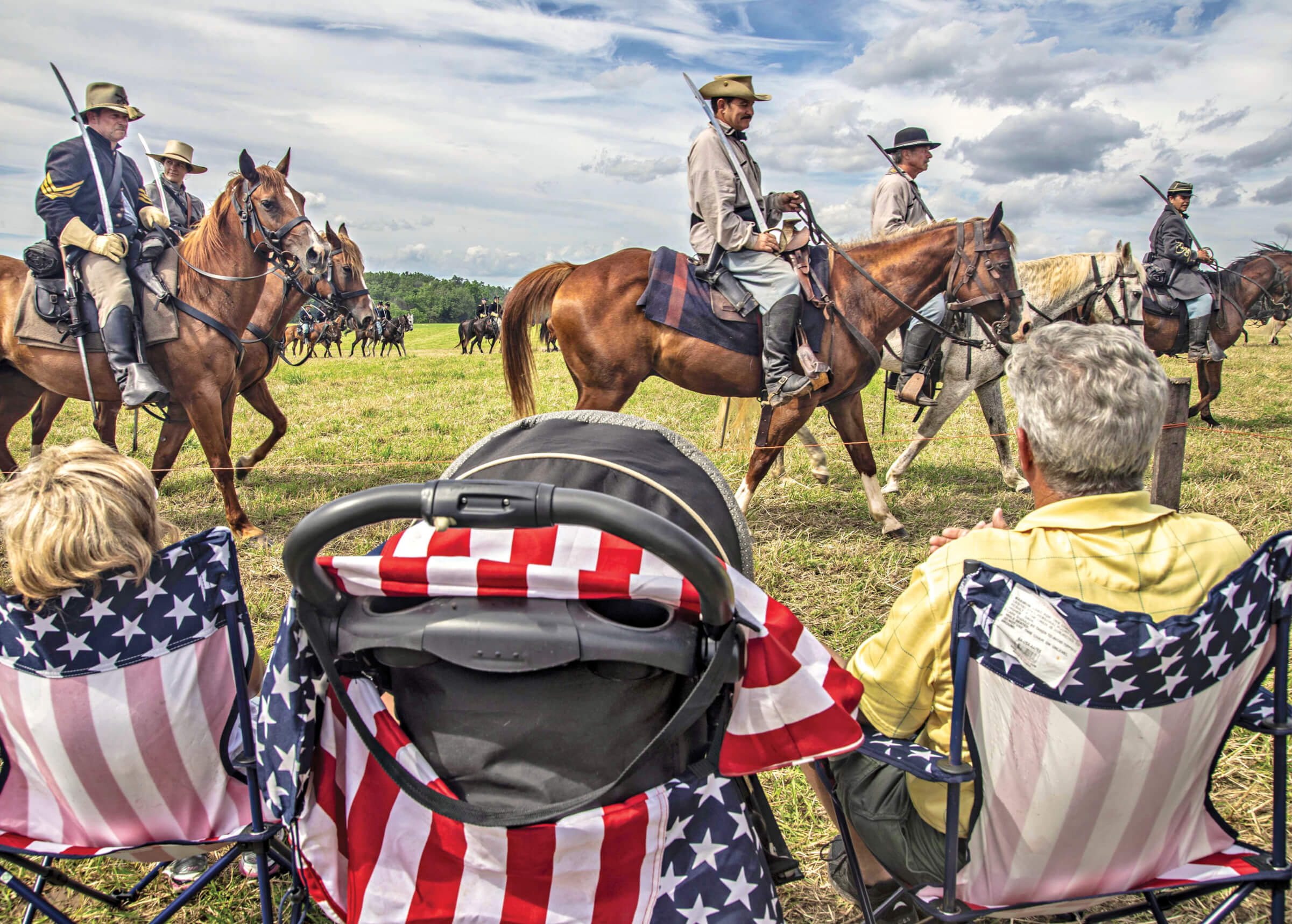
A Civil War reenactment
FEW EVENTS hold such a consequential place in American history as the Battle of Gettysburg. A turning point in the Civil War, the three-day battle was its bloodiest, with an estimated more than 51,000 casualties.
No surprise that pilgrims are attracted to these grounds. “It has a double-barreled significance,” says Jason Martz, communications specialist for the Gettysburg National Military Park, which is managed by the National Park Service. “You want to walk in your ancestor’s footsteps, see the biggest battlefield, which is still shaping the country as we speak, and it’s the site of Lincoln’s Gettysburg Address.”
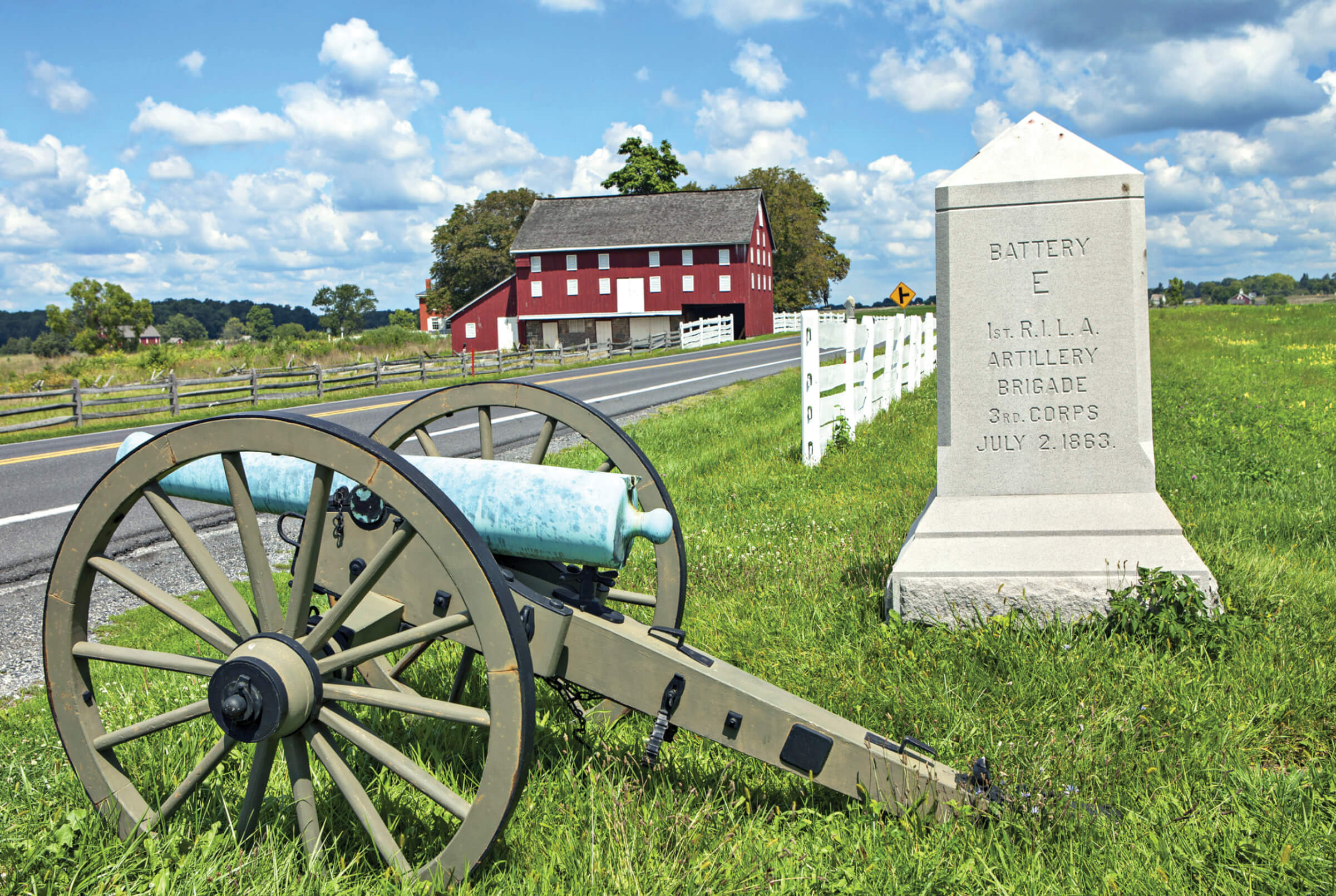
Gettysburg National Military Park
John McPherson, 76, of Brattleboro, Vermont, recently learned that his great-grandfather was abolitionist Thaddeus Stevens’ law partner in Gettysburg and made a pilgrimage to Gettysburg to see his extended family’s burial places. “People say ‘hallowed ground,’ and it’s true. I suddenly had a sense that I had returned home.”

John McPherson, left
Visitors with distant connections to soldiers, from North or South, can make pilgrimages to the military park, walking past the more than 1,300 monuments, markers and memorials and approximately 150 historic buildings. “We have a renowned guide program here,” says Carl Whitehill of Destination Gettysburg. “They ask you where you’re from to try to connect you to your own family history, where the boys from your hometown fought. When you humanize the battle, it’s very impactful.” —Veronica Stoddart and Robin Westen
IF YOU GO Harrisburg International Airport is a 50-minute drive away. The battlefield is free to visit. There are fees for other attractions. Battlefield bus tours cost about $40.
9/11 MEMORIAL
New York City
“It’s a quiet place, respectful.”
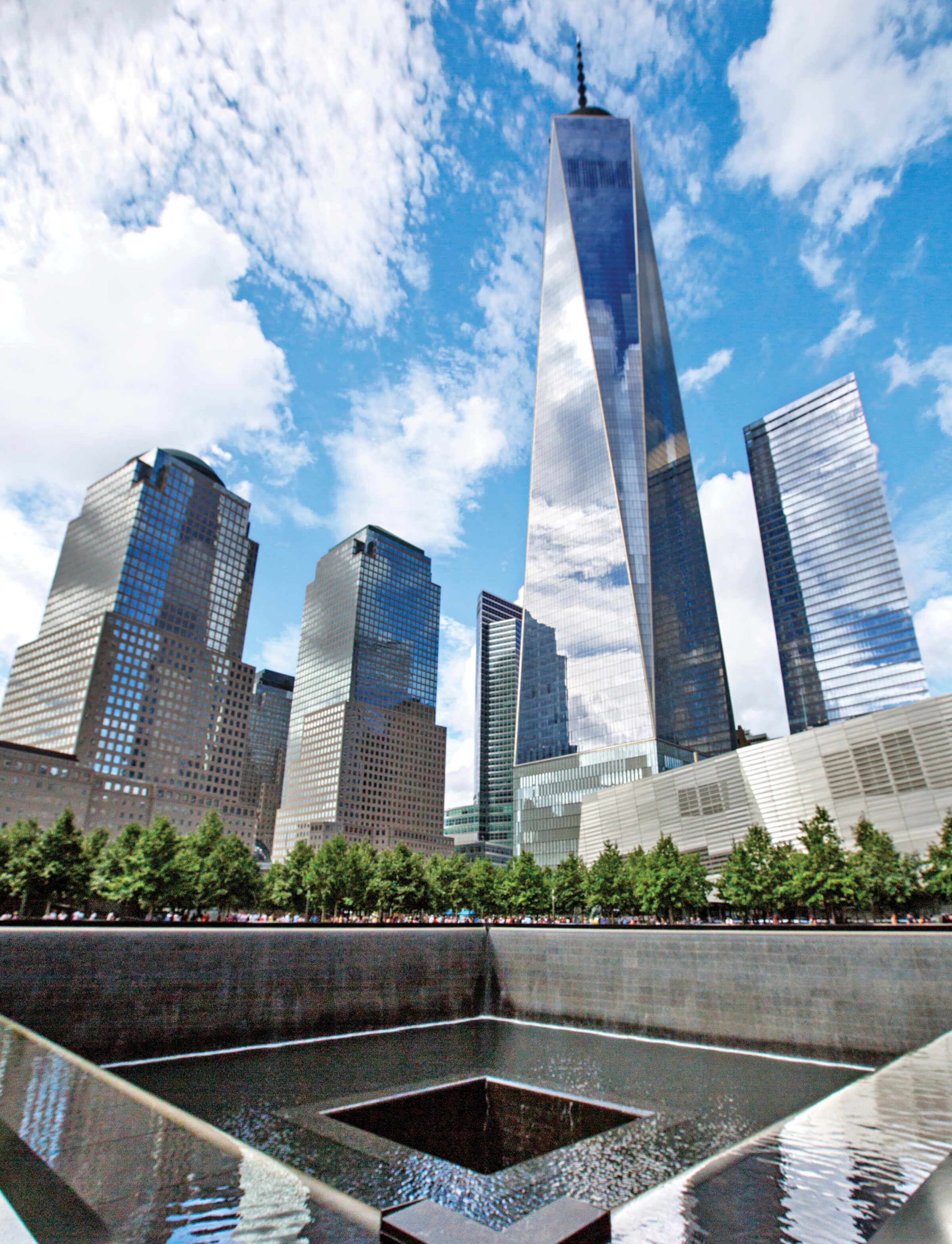
GORDON HABERMAN has traveled with his wife from Wisconsin to the 9/11 Memorial nearly every year since it opened in 2011. Their daughter, Andrea, was in the World Trade Center for a business meeting, among the nearly 3,000 people who died in the September 11, 2001, terrorist attacks. “We gravitate, of course, to Andrea’s name on the north fountain,” Haberman, 73, says. “Every year on the 11th, they close the plaza and museum to just family members [for part of the day]. And those times are more poignant, because everybody’s in the same situation. It’s a quiet place, respectful.”

Inscribed names of 9/11 victims
The power of the plaza—which has drawn more than 72 million visitors—comes not only from its location but its design. There are two pools, each about an acre, where the Twin Towers once stood. The square black cavities are surrounded by bronze parapets with 2,983 victims’ names inscribed on them. The open space and reflecting pools “frame the enormous absence created,” says Cliff Chanin, director of the 9/11 Memorial Museum.

James Wittig
James Wittig, M.D., worked with a medical team at Ground Zero and gave the museum his 9/11 artifacts—which he’d sealed in a bag for 21 years. In 2022, he traveled there from his home in Morristown, New Jersey. “It was such a relief not only to release my sadness and negative energy but to remember how everybody came together.” —Ken Budd
IF YOU GO LaGuardia Airport is close by the 9/11 Memorial. Take a taxi to Lower Manhattan. Museum admission ranges from $21 to $33. Retired military enter for free.
GRACELAND
Memphis, Tennessee
“I feel a spiritual presence.”

Visitors to Graceland
FOR MUSIC FANS, there is probably no more sacred site in America than Elvis Presley’s home. Since it opened to the public in 1982, roughly 600,000 people have explored the mansion each year.
At Graceland, you get to know Elvis the person, not the image. You see the music room where he played gospel tunes on the piano. You see the exotic Jungle Room with its waterfall, green shag carpeting (on the floor and ceiling) and faux-fur Polynesian-style furniture—a hideaway where Elvis liked to eat breakfast.

The pool room
“I feel a powerful longing to just be there,” says Mary Hertweck, who has visited Graceland more than 60 times since 2017. Her favorite space is the Meditation Garden, where Elvis and his family are buried, and where she feels “a spiritual presence.”
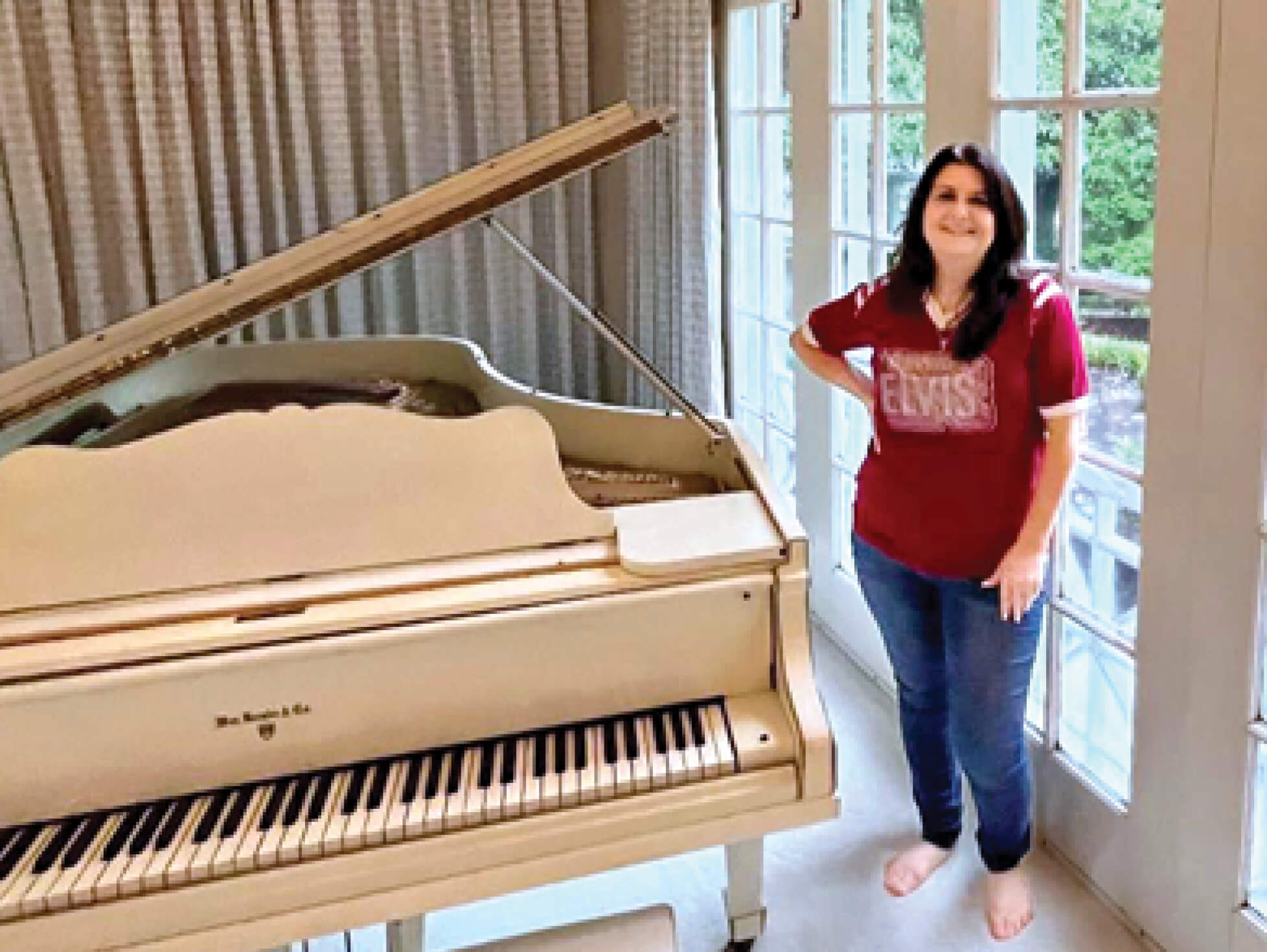
Mary Hertweck
Angie Marchese is a 34-year employee of Graceland, first as a tour guide and now vice president of archives and exhibits. She describes the experience: “You’re walking through the same door that Elvis did when he bought the house in ’57, when he brought Lisa Marie home from the hospital, where he’d greet friends.” —K.B.
IF YOU GO Graceland is about 4 miles from Memphis International Airport. Admission is $82. While in Memphis, many fans also visit Sun Studio (tickets are $20), where Elvis first recorded.
PEARL HARBOR
O‘ahu, Hawai‘i
“I imagined enemy aircraft bearing down.”
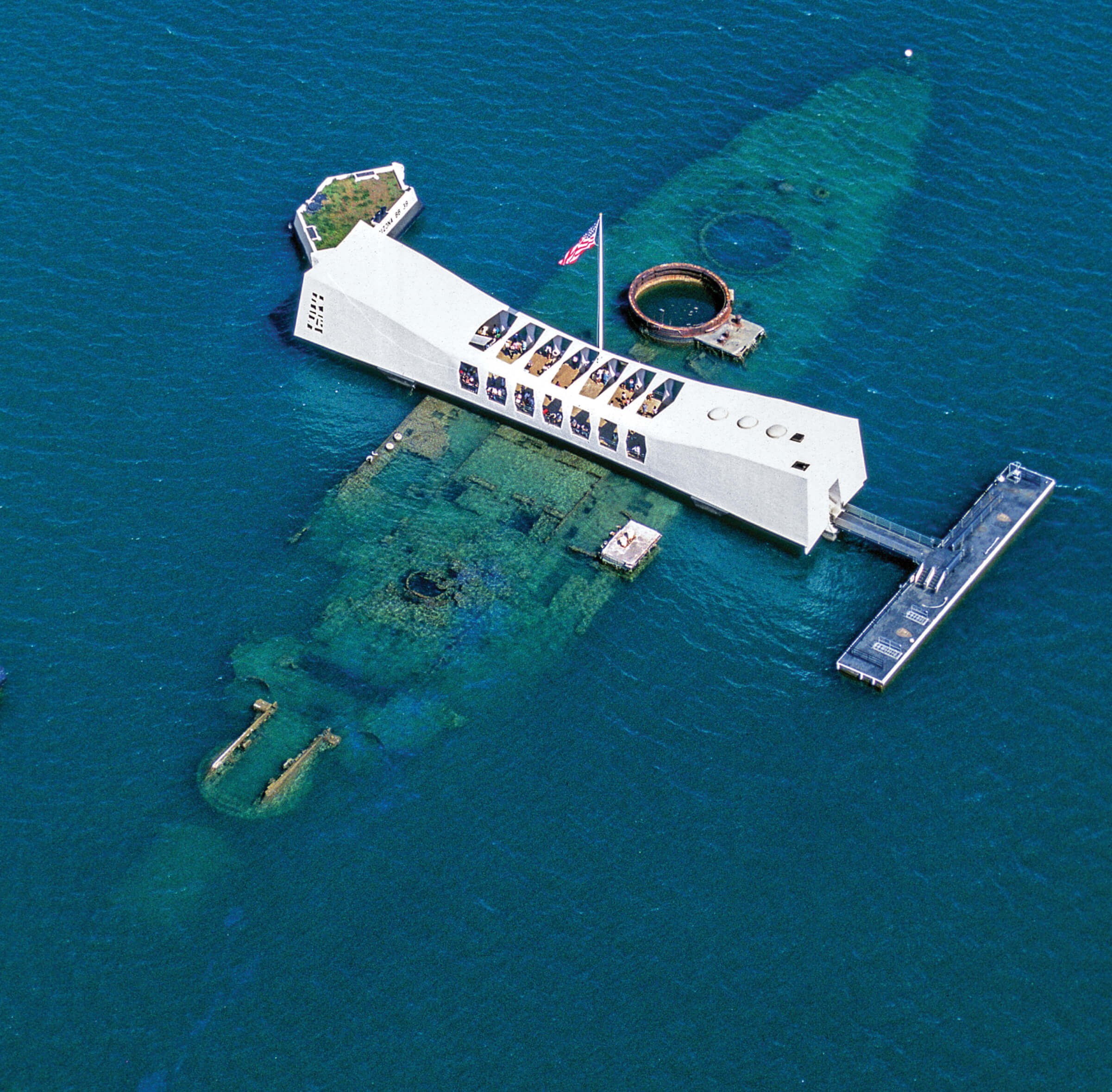
USS Arizona Memorial
WE ALL KNOW that December 7, 1941, was “a date which will live in infamy.” But to ensure that no one forgets the Japanese attack on the U.S. naval base in Hawai‘i, the Pearl Harbor National Memorial opened in 1962.
For decades, World War II vets and family members of the more than 2,400 Americans who perished at Pearl Harbor have been among the more than 1.5 million annual visitors. But even those without strong ties make pilgrimages.
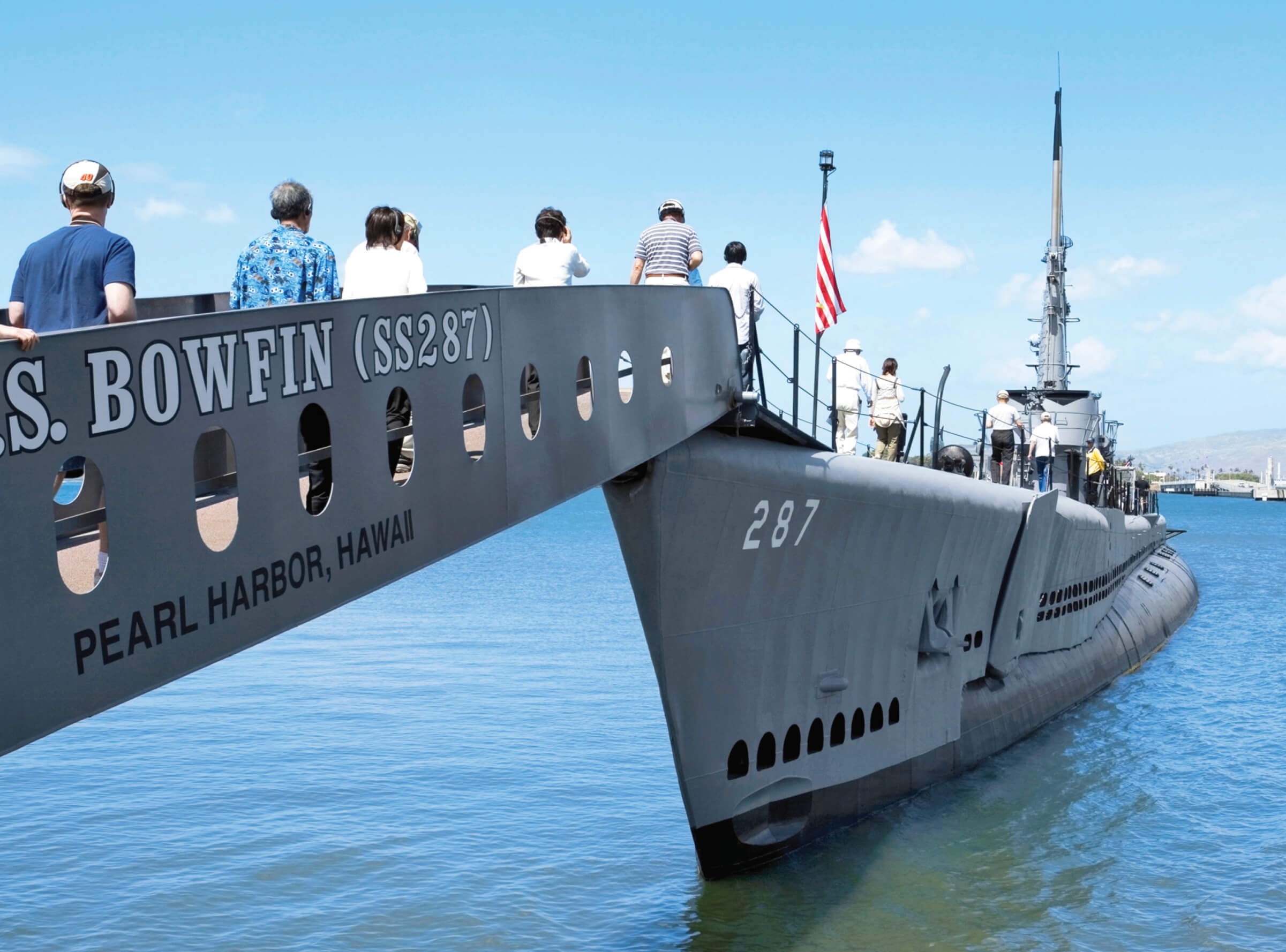
Visitors at the USS Bowfin
Journalist Denise Goolsby, 63, remembers interviewing eight Pearl Harbor survivors about 15 years ago. “Their stories were harrowing and horrifying as they recalled the sheer devastation.”

Denise Goolsby, above
In 2020, Goolsby went to see Pearl Harbor herself. “My heart sank. I thought about the survivor vets who had become such a special part of my life. I imagined enemy aircraft bearing down from all directions. I walked to where visitors can still see the eerie remains of the USS Arizona. One of the veterans I interviewed was on the USS Tennessee, docked right in front of the Arizona, and recalled the explosion and the flames. It all happened right where I was standing.” —Kathy Strong
IF YOU GO Fly to Honolulu’s Daniel K. Inouye International Airport. Entry to Pearl Harbor’s Visitor Center and museums is free. To view the USS Arizona Memorial, make a reservation at recreation.gov.
EDMUND PETTUS BRIDGE
Selma, Alabama
“You try to feel what they felt.”

Edmund Pettus Bridge
THIS BRIDGE IS small, no architectural marvel. That isn’t why people come to see it. On March 7, 1965, roughly 600 civil rights marchers peacefully approached the Edmund Pettus Bridge and were clubbed and tear-gassed by police. More than 15 people were hospitalized and others treated for injuries on “Bloody Sunday.” “That afternoon changed the whole meaning of democracy,” says marcher Jo Ann Bland, 70. “People who had felt left out stood up and said, ‘We want full citizenship.’ That bridge represents freedom. It’s a symbol that says, ‘I have power to enact change.’ ”
Bland, then 11, was one of many young activists, recruited because adult protesters often feared losing their jobs. Shocked by the violence and tear gas, she fainted, then awoke in a car, her head in her sister’s lap. Only when fully awake did she realize that what she thought were tears on her face was actually blood. Today, Bland and fellow protester Kirk D. Carrington Sr. lead tours in Selma. The bridge, they say, endures as a pilgrimage site because it symbolizes our yearning for liberty—and the sacrifices that demands.
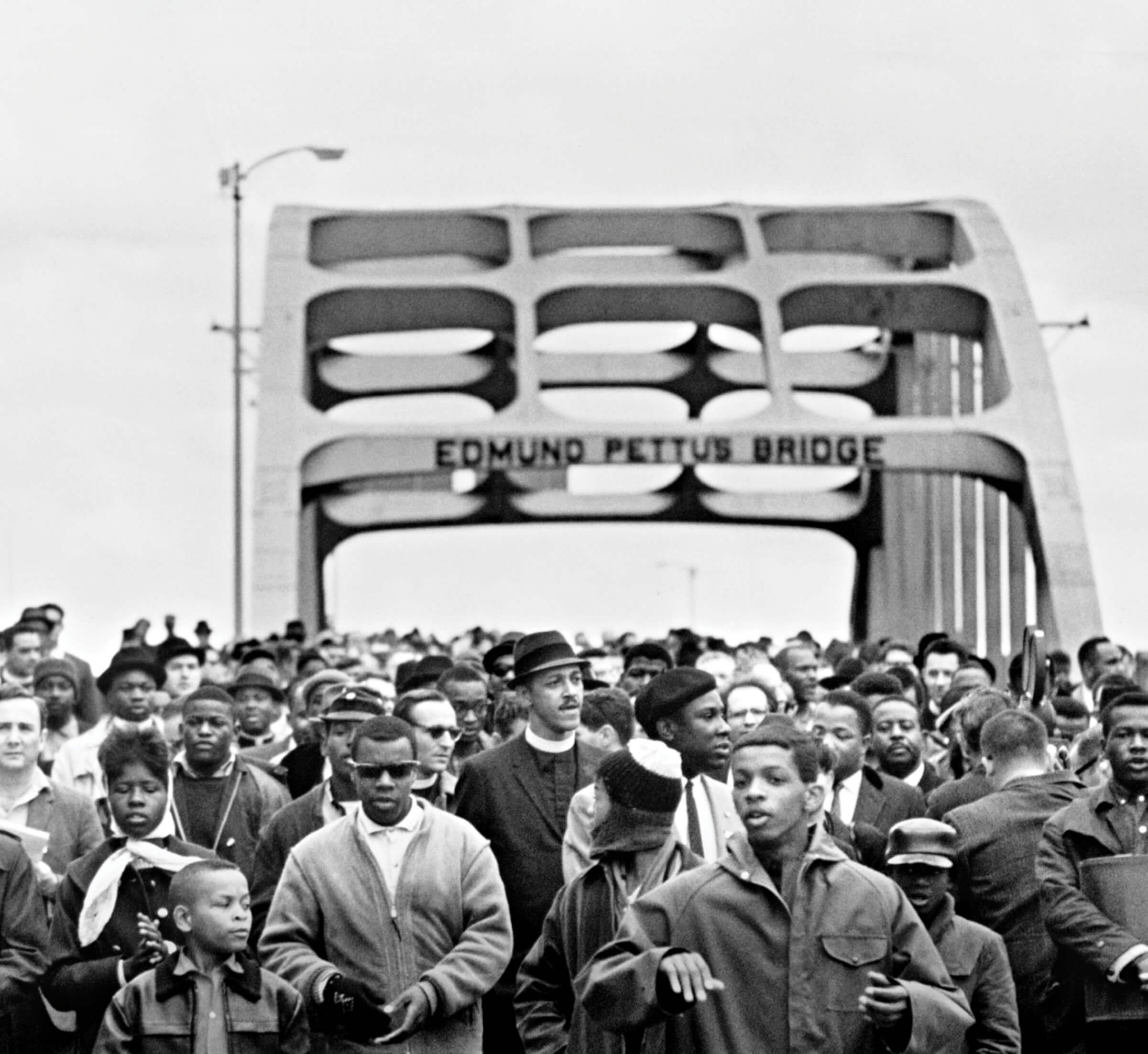
Civil rights marchers, 1965
Denise Davidson is a Pettus pilgrim. She has visited other African American historic sites but especially wanted to see the bridge, named after a grand dragon of the Alabama Ku Klux Klan. In June 2023, she and a friend took a silent, solemn walk across it, with the Alabama River chugging below. “You imagine the people who marched that day,” Davidson says, “and try to feel what they felt.” —K.B.
IF YOU GO Fly into Montgomery Regional Airport and drive 45 minutes to Selma. Stop at the free Selma Interpretive Center at the foot of the bridge for exhibits and information on it and other important civil rights sites.
STONEWALL INN
New York City
“Where we fought to be who we are.”

Stonewall Inn in Greenwich Village
MANHATTAN’S Stonewall Inn was a dark, nondescript bar, but it was a place where LGBTQ+ people could gather. A police raid in June 1969 ignited protests over six days on the surrounding streets; the events were pivotal in the movement for LGBTQ+ equality. Stonewall has since become a landmark and a monument to their struggle and draws visitors from around the world.
The Stonewall Inn is surrounded by the Stonewall National Monument, a 7.7-acre area. In June, a new visitor center will open; AARP is a founding supporter.
Russ Goeltenbodt, a 67-year-old cabaret singer, recently made a trip from Chicago and visited Stonewall. “I got this feeling of nostalgia; I had extreme emotions,” he says. “I remember tears welling up in my eyes and a lump in my throat. Wow, this is where it all happened. This is where the community fought to be who we are.”
While there, a friend urged Goeltenbodt to take the stage. As Goeltenbodt belted out “I Am What I Am” from La Cage Aux Folles, others in the crowd cheered and one person shook a tambourine. “It’s difficult to put into words, but it almost felt like watching a movie as you go in. It was an amazing experience.”
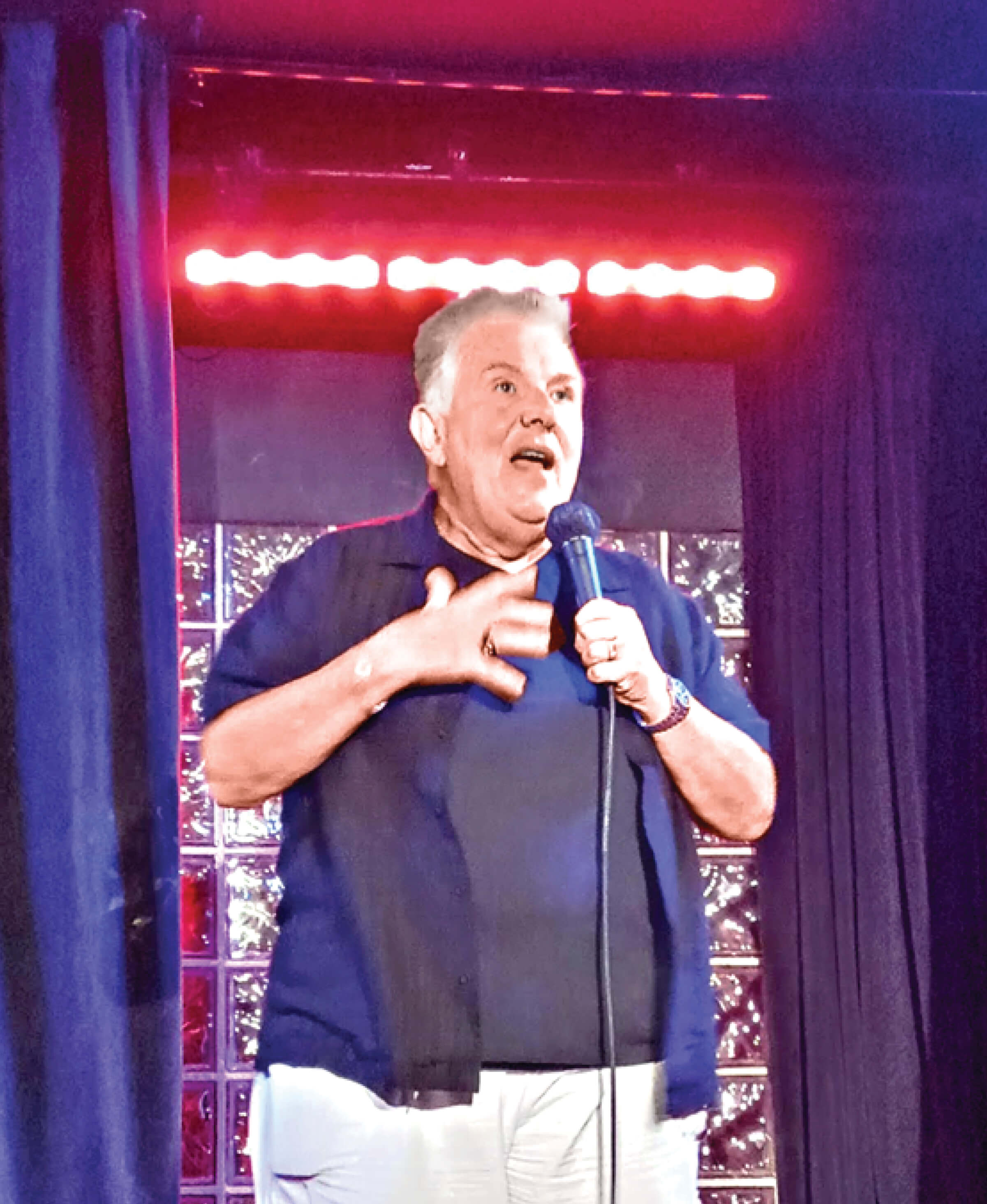
Russ Goeltenbodt
Such visitor reactions are common, says Andrew Lear of Oscar Wilde Tours, an LGBTQ+ tour company: “The Stonewall Inn served as a symbolic start of a movement, like the original Thanksgiving dinner served as a symbol for the start of a holiday.” —Jenna Gyimesi
IF YOU GO The recently refurbished LaGuardia Airport is close to Manhattan. Entry to Stonewall is free. For more information, go to nps.gov/ston.
CALIFORNIA MISSIONS TRAIL
San Diego to Sonoma, California
“You get to know yourself better.”
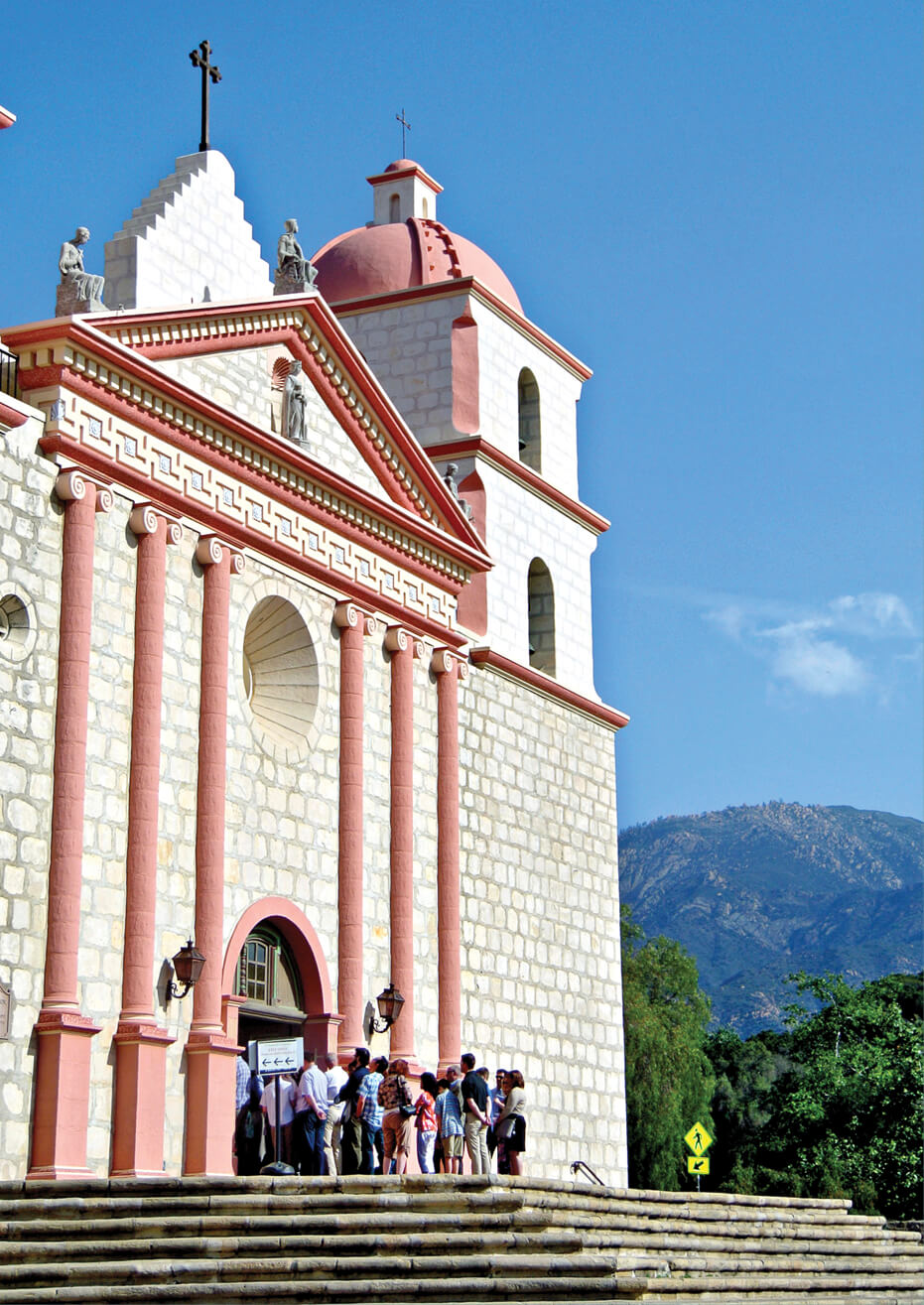
Santa Barbara mission
RELIGIOUS PILGRIMS have walked Spain’s Camino de Santiago for centuries, but California has its own sort of Camino: an 800-mile trail with 21 missions built between 1769 and 1823.
Julie Amaya, 65, has walked both the Spanish and California trails, but her connections to the California Missions Trail run deep. Amaya’s ancestors walked part of the route during an 18th-century expedition to colonize San Francisco. She went to Mission San Juan Bautista while in fourth grade and later visited many of the missions with her two young sons. Within the past eight years, Amaya has lost both sons. After each tragedy, she felt compelled to walk the trail. “I needed the time, solitude and space to sort out my life.”
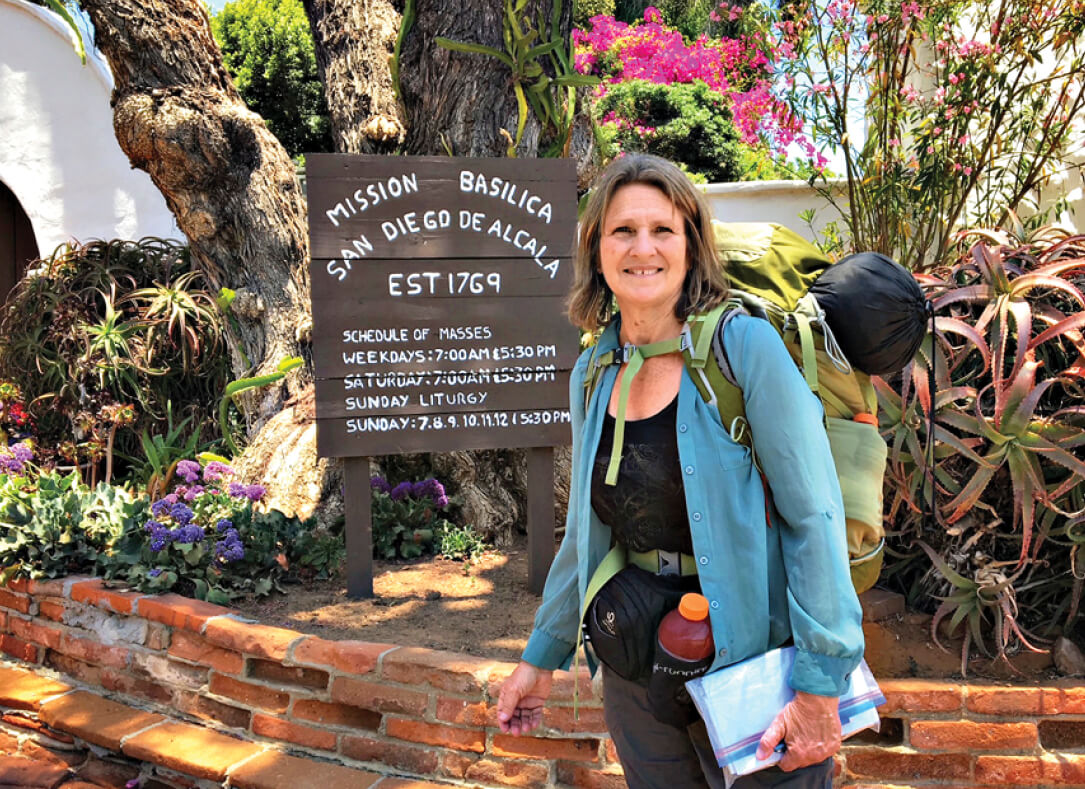
Julie Amaya
Contemplation is common on the trail, says Laura Harris of Bozeman, Montana, who completed the walk in May 2021: “You get out of your safe space and get to know yourself better. You see the world at two miles an hour.” —K.B.
IF YOU GO For more information, go to Mission Walk.org or California MissionsTrail.org. Good guidebooks are Hiking and Cycling the California Missions Trail and California Mission Walk.
NATIONAL UNDERGROUND RAILROAD FREEDOM CENTER
Cincinnati
“It was a powerful symbol to me.”

An exhibit at the National Underground Railroad Freedom Center
When you gaze out the third-floor windows of the National Underground Railroad Freedom Center, you’re not just taking in a lovely panorama of the Ohio River, you’re looking into our nation’s past, when this was the dividing line between North and South, between liberty and enslavement.
“I’ve brought hundreds of people here, from young students to Underground Railroad tour groups,” says David Childs, director of Black studies at Northern Kentucky University. “It always blows people away.”
The vast Freedom Center gets upward of 80,000 visitors per year and is anchored by an original two-story slave holding pen—with iron rings still attached to its age-darkened clapboards. The museum traces an extensive timeline of slavery and human trafficking from 1619 to the present.
Richard Blackett, 80, a historian of the abolitionist movement and emeritus professor at Vanderbilt University, brought his two young adult sons on a pilgrimage from Nashville, Tennessee, a few weeks after the museum opened in 2004. “It was a very powerful symbol to me,” he says. “Walking through the slave pen, looking across the river made it easy to imagine an enslaved person in captivity—and in flight.” To Blackett, the museum’s very existence is hugely significant in recognizing a tense and complicated era. So, too, is the museum’s emphasis on unheralded stories of the American slave experience—everyday heroes who can’t be found in history books.
Museum organizers understand that appeal to pilgrims. On the fourth floor, visitors can research their genealogy on a far-reaching database. Childs discovered there that he is descended from people enslaved in Greenville, South Carolina. A pastor of the First Antioch Baptist Church, Childs brought his entire congregation to the Freedom Center. Many of them had experienced Jim Crow discrimination and racial violence firsthand. “One member, in her mid-60s, was deeply moved,” he says. “After my sermon the next week, she told me, ‘The next time you take your young students, I want to come along.’ One pilgrimage just wasn’t enough.” —Evelyn Spence
IF YOU GO: The National Underground Railroad Freedom Center is open Wednesdays through Sundays. Adult admission is $16.50, or $14 for those 60 and older. While in Cincinnati, you can also visit the Nancy & David Wolf Holocaust & Humanity Center. Combo tickets that grant admission to that museum and the Freedom Center are available.
PRO FOOTBALL HALL OF FAME
Canton, Ohio
“This is the Mount Rushmore of the NFL.”
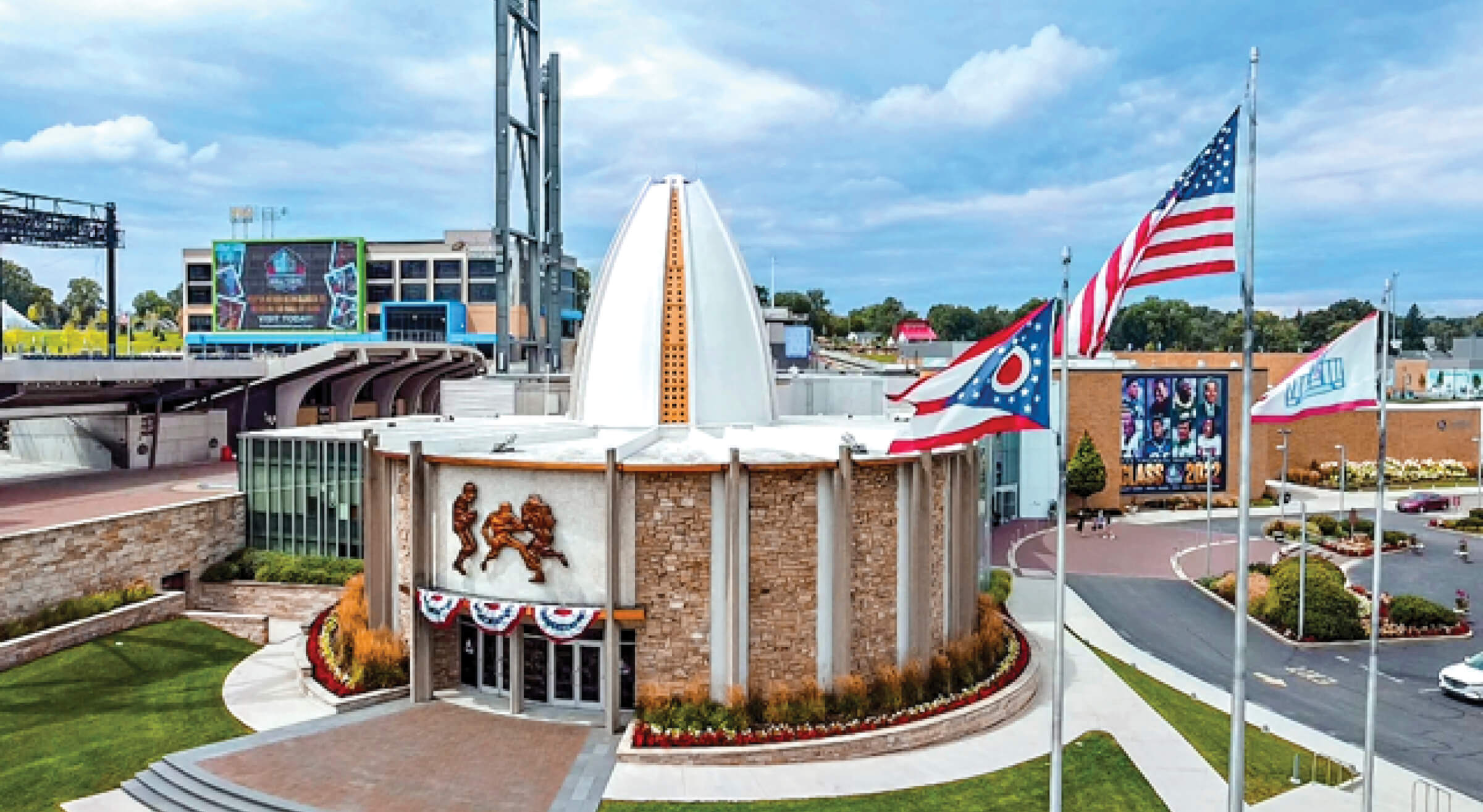
Pro Football Hall of Fame building
This city is the birthplace of the National Football League. And the museum that opened here in 1963 celebrates that history, drawing American fans and families (and patient spouses) to this small city (population about 70,000) in northeastern Ohio. “This is the holy grail, the Mount Rushmore of the NFL,” says Ken Riley II of the shrine to 371 of the best to play the game, and to the sport in general.
More than 10 million people have visited, admiring not only the busts in the Hall of Fame Gallery but also exhibits on the game’s leather-helmet early days, precious artifacts (such as the draft card used to select Tom Brady), and displays on the game’s great dynasties. As legendary running back Marshall Faulk declared in his 2011 enshrinement speech, the hall is “football heaven.” And with football woven into the fabric of America, personal pilgrimages are plentiful.
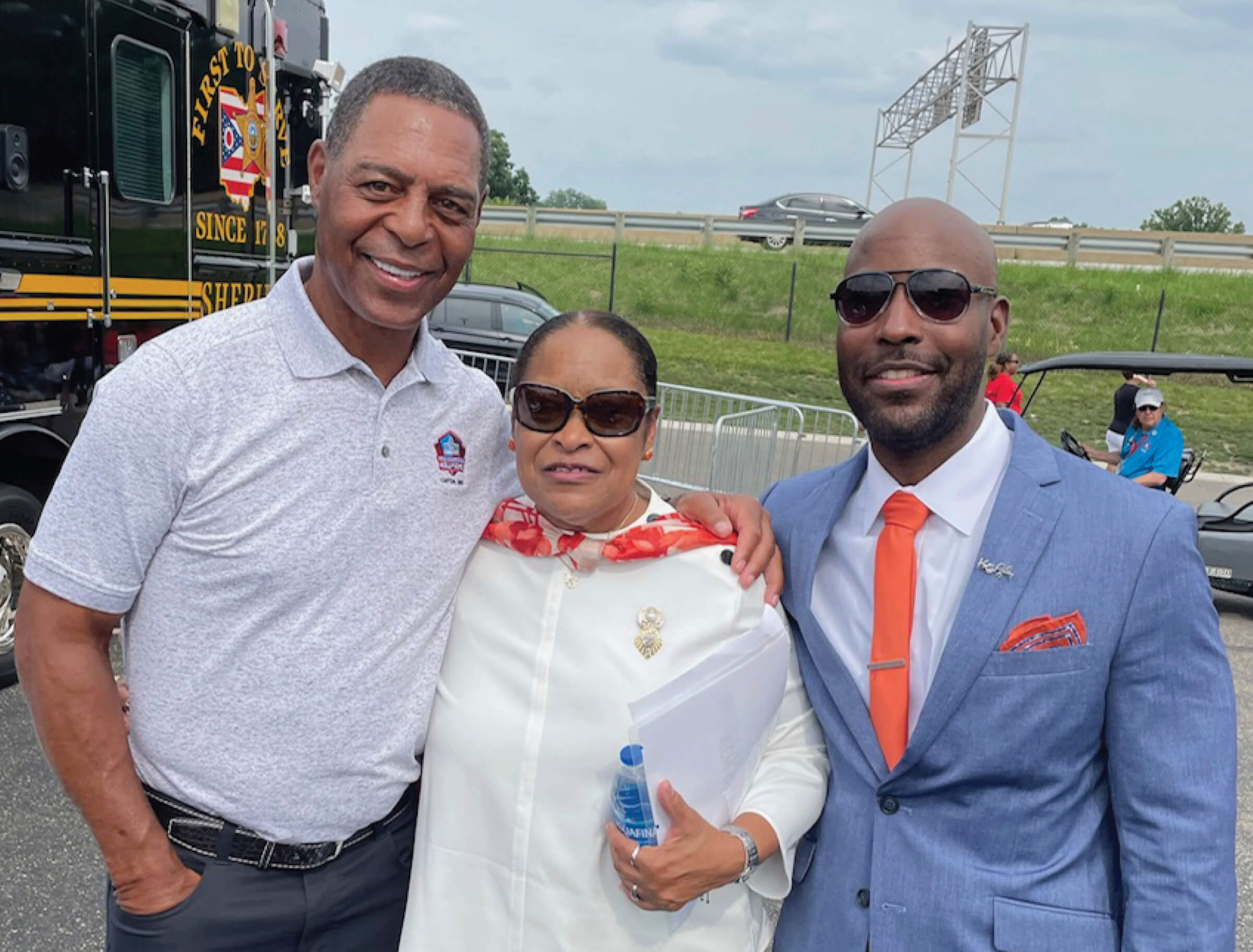
Ken Riley with his mom, Barbara Riley and NFL running back Marcus Allen
Riley II, 51, vowed he would never step foot inside the hall. At least not until his father, Ken, a cornerback who played 15 seasons for the Cincinnati Bengals, was enshrined. It’s not like Ken Riley didn’t have the credentials—his 65 interceptions are currently tied for the fifth most ever. He retired in 1983, and for decades his family lobbied Hall of Fame voters on his behalf. Each year, they were disappointed. “Until they did right by him, I wasn’t going,” says Riley II.
Riley Sr. died in 2020 and was inducted posthumously in 2023. That March, Riley II and his wife made the pilgrimage to Canton. He saw his father on a large banner for the class of ’23 and felt proud. And relieved. But sad that his father couldn’t enjoy it. He then made a new vow: “I’ll be back every year.” —K.B.
IF YOU GO: Adult admission is $45. Visitors 65 and older can get in for $15 on Tuesdays. Akron-Canton Airport is 10 minutes away. Non-football fans can peel off and visit the McKinley Presidential Library & Museum, which not only explores the history of the 25th president’s life, it also has a planetarium for the kids.
Three More American Pilgrimages
If You’re Passionate About ...


ARCHITECTURE
For a Windy City pilgrimage, the Chicago Architecture Center offers tours of the city’s many impressive structures, and the Frank Lloyd Wright Trust hosts tours of four of the architect’s noteworthy works, such as the Unity Temple in nearby Oak Park, Illinois.


BASEBALL
Big League Tours offers trips to stadiums in six regions. Its nine-night East Coast tour features six games in five cities, plus a trip to the National Baseball Hall of Fame and Museum in Cooperstown, New York. Similar treks are available through Grand Slam Baseball Tours and Dream Baseball Tours.


COUNTRY MUSIC
Nashville, Tennessee, is loaded with iconic sites, from the historic Ryman Auditorium—former home of the Grand Ole Opry—to the Country Music Hall of Fame and Museum. Nashville Music City provides guidance; TourRadar offers a multi-night package for CMA Fest in June.
